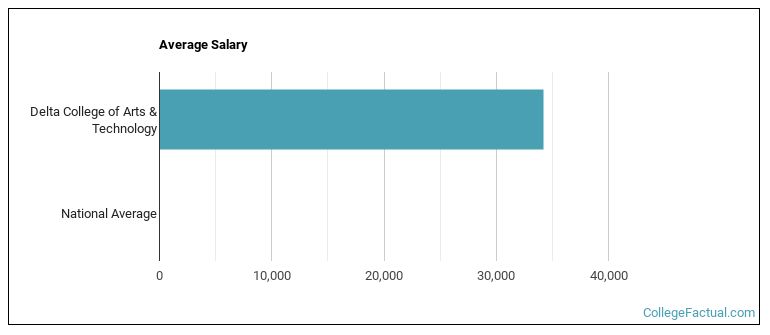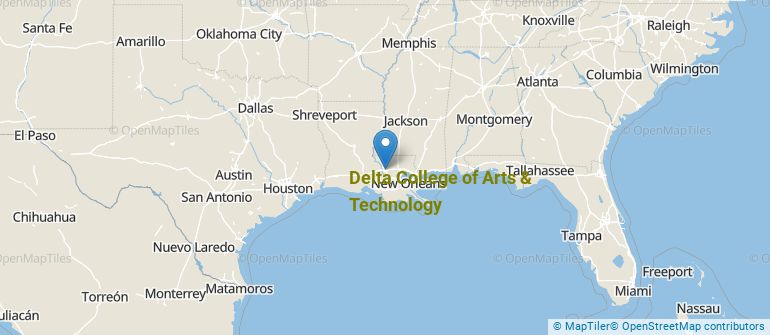 by our College Data Analytics Team
by our College Data Analytics TeamExplore the best ranked schools for the programs you are most interested in.
Delta College of Arts & Technology was not ranked in College Factual's Best Overall Colleges report this year. This may be because not enough data was available.
See all of the rankings for Delta College of Arts & Technology.
Returning adults and other non-traditional students may appreciate the fact that Delta College of Arts & Technology has an open admissions policy. This means that you'll only have to submit basic materials, which may include proof that you completed high school or an equivalent program.
The student to faculty ratio is often used to estimate how much interaction there is between professors and their students at a college or university. At Delta College of Arts & Technology, this ratio is 15 to 1, which is on par with the national average of 15 to 1. That's not bad at all.
When estimating how much access students will have to their teachers, some people like to look at what percentage of faculty members are full time. This is because part-time teachers may not have as much time to spend on campus as their full-time counterparts.
The full-time faculty percentage at Delta College of Arts & Technology is 45%. This is comparable to the national average of 47%.
The freshmen retention rate is a measure of what percentage of first-year, full-time students come back for their sophomore year. The 27% rate at Delta College of Arts & Technology is a good bit lower than the national rate of 68%. This could be for a number of reasons, such as students transferring after a year because they changed majors.
During the 2017-2018 academic year, there were 287 full-time undergraduates at Delta College of Arts & Technology.
The net price is calculated by adding tuition, room, board and other costs and subtracting financial aid.Note that the net price is typically less than the published for a school. For more information on the sticker price of Delta College of Arts & Technology, see our tuition and fees and room and board pages.
While almost two-thirds of students nationwide take out loans to pay for college, the percentage may be quite different for the school you plan on attending. At Delta College of Arts & Technology, approximately 73% of students took out student loans averaging $5,168 a year. That adds up to $20,672 over four years for those students.
Get more details about paying for Delta College of Arts & Technology.

See which majors at Delta College of Arts & Technology make the most money.
Get more details about the location of Delta College of Arts & Technology.

Contact details for Delta College of Arts & Technology are given below.
| Contact Details | |
|---|---|
| Address: | 7380 Exchange Place, Baton Rouge, LA 70806-1529 |
| Phone: | 225-928-7770 |
| Website: | www.deltacollege.com/ |
| Most Popular Majors | Bachelor’s Degrees | Average Salary of Graduates |
|---|---|---|
| Practical Nursing & Nursing Assistants | 83 | NA |
| Allied Health & Medical Assisting Services | 27 | NA |
| Dental Support Services | 11 | NA |
| Health & Medical Administrative Services | 11 | NA |
| Design & Applied Arts | 8 | NA |
| Business Administration & Management | 3 | NA |
| Business Support & Assistant Services | 0 | NA |
Footnotes
*The racial-ethnic minorities count is calculated by taking the total number of students and subtracting white students, international students, and students whose race/ethnicity was unknown. This number is then divided by the total number of students at the school to obtain the racial-ethnic minorities percentage.
References
More about our data sources and methodologies.